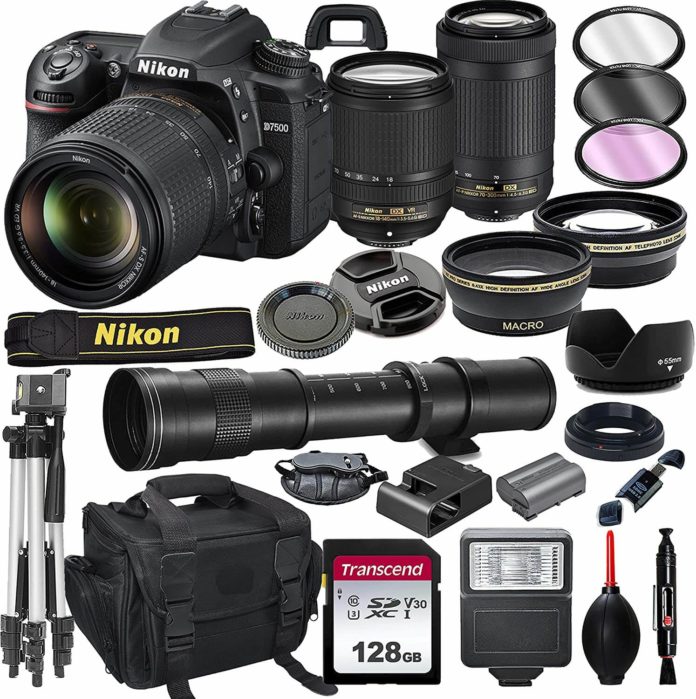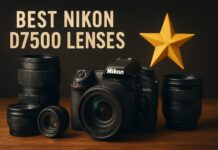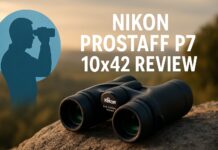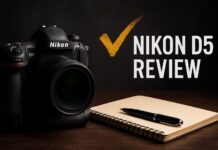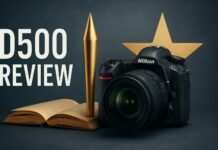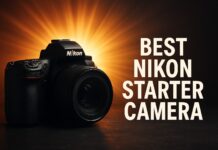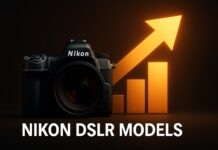The Nikon D7500 represents one of the smartest investments in photography today. Not because it’s the newest camera – it isn’t. Not because it offers cutting-edge mirrorless features – it doesn’t. The D7500 is brilliant because it delivers professional-grade performance at enthusiast pricing, especially when purchased as a bundle. After years of shooting with both this camera and its competitors, I can tell you why the D7500 deserves serious consideration in 2025.
This isn’t a camera review regurgitating specifications. This is strategic buying guidance from someone who’s watched the used and bundle market evolve, who understands where real photographic value lies, and who can explain why certain bundle configurations make sense while others waste your money.
Contents
- Why the Nikon D7500 Matters in 2025
- The Strategic Advantage of Bundle Deals
- Understanding the Nikon D7500’s Real Capabilities
- Why Buy a Bundle Instead of Body Only?
- Analyzing Smart Nikon D7500 Bundle Configurations
- Essential Accessories: What Actually Matters
- Nikon D7500 vs Alternatives: Why Choose This Camera?
- The Financial Case: Why D7500 Bundles Make Sense Now
- Who Should Buy the Nikon D7500?
- Making Your Decision: Bundle Selection Strategy
- Final Perspective: Why the D7500 Endures
Why the Nikon D7500 Matters in 2025
Photography forums overflow with debates about DSLRs versus mirrorless. Meanwhile, smart photographers quietly buy D7500s at 40-50% off their original $1,250 body-only price and spend the savings on glass – the investment that actually determines image quality.
The D7500 occupies a remarkable position: it’s Nikon’s last serious DX-format (APS-C) DSLR before they pivoted entirely to mirrorless. This makes it the refined final evolution of decades of DSLR development – mature technology with all the bugs worked out.
What makes this camera special:
Sensor Performance: The 20.9MP sensor prioritizes image quality over pixel count. This isn’t a compromise – it’s intelligent design. Lower resolution means larger pixels, which capture more light. The result? Exceptional high-ISO performance that lets you shoot in dim conditions without noisy, degraded images.
Speed: 8 frames per second continuous shooting with a 51-point autofocus system that was professional-grade when released and remains highly capable today. This isn’t entry-level performance – this is what sports and wildlife photographers need.
Build Quality: Weather-sealed magnesium alloy construction. This camera survives conditions that would destroy lesser bodies. I’ve shot in pouring rain, dusty deserts, and freezing mountains with zero issues.
True 4K Video: Unlike budget cameras that crop or compromise, the D7500 shoots uncropped 4K at 30fps with excellent quality. For hybrid shooters needing both stills and video, this delivers.
The Strategic Advantage of Bundle Deals
Here’s what camera retailers won’t tell you: bundles exist because they move inventory profitably while appearing to offer value. Some bundles are excellent deals. Most are designed to maximize margin on accessories you don’t need.
After analyzing dozens of D7500 bundles over the years, I’ve identified what separates smart purchases from money traps.
What Makes a Bundle Worth Buying
Quality Glass Over Accessory Quantity: A bundle with a $600 lens and minimal accessories beats one with a $200 lens and 30 items you’ll never use. The lens determines image quality – everything else is secondary.
Avoid Cheap Third-Party Accessories: That “deluxe 32-piece kit” with generic filters, tiny tripod, and off-brand flash? It’s junk. You’ll replace it all within months. Better to buy the camera with good glass and add quality accessories individually.
Look for Nikkor Glass: Nikon’s own lenses (Nikkor) maintain value and perform reliably. Third-party optics can be good (Sigma, Tamron), but bundled third-party lenses are usually budget models you’ll outgrow quickly.
Memory Cards That Actually Work: Name-brand cards (SanDisk, Lexar) matter. The D7500 produces large RAW files – slow or unreliable cards cause camera lockups and corrupt images. A quality 64GB UHS-I card should be minimum.
Understanding the Nikon D7500’s Real Capabilities
Before analyzing specific bundles, let’s establish what this camera actually delivers so you can make informed decisions.
Sensor and Image Quality: Where It Excels
The 20.9MP DX-format CMOS sensor uses Nikon’s EXPEED 5 processor – the same engine powering Nikon’s professional cameras. This combination produces remarkable results.
Dynamic Range: You can lift shadows aggressively in post-processing without introducing noise. Landscape photographers shooting into the sun can recover shadow detail while preserving highlights – critical for high-contrast scenes.
ISO Performance: Native ISO 100-51,200 (expandable to 1,640,000). Practically, ISO 6400 produces clean, printable images. ISO 12,800 remains usable for critical shots. This crushes earlier DSLRs where ISO 3200 was the limit.
APS-C Advantage for Telephoto Work: The 1.5x crop factor effectively extends lens reach. A 200mm lens becomes 300mm equivalent. For wildlife and sports photographers, this crop factor is an advantage, not a limitation. You get more reach at lower cost and weight.
Autofocus System: Professional Grade
The 51-point AF system (with 15 cross-type sensors) inherited from Nikon’s pro cameras delivers reliable performance in challenging conditions.
Low-Light AF Performance: Focuses down to -3 EV. This means it locks focus in near darkness where your eyes struggle to see the subject. Combined with high ISO capability, this makes the D7500 exceptional for indoor events, concerts, and night photography.
3D Tracking: The AF system tracks moving subjects across the frame with remarkable accuracy. I’ve shot birds in flight, running athletes, and unpredictable kids – the D7500 keeps them in focus more reliably than cameras costing twice as much.
Group Area AF: Groups five AF points together for subjects that are hard to isolate with a single point – perfect for erratic wildlife or sports action.
The 8 fps Advantage: Why Speed Matters
Eight frames per second doesn’t sound revolutionary until you’ve missed decisive moments because your camera shoots only 5 fps. Those extra frames capture peak expression, perfect athletic form, or that instant when the bird’s wings are perfectly positioned.
The D7500’s buffer handles 50 RAW files or 100 JPEGs before slowing. This is substantial – you can shoot entire sequences without the camera choking.
Video Capability: Genuinely Excellent
The D7500 records 4K UHD (3840×2160) at 30p/25p/24p without crop. This is significant – many cameras crop heavily in 4K, defeating the purpose of wide-angle lenses.
What makes D7500 video standout:
- Clean HDMI output for external recorders
- Zebra stripes and focus peaking (essential for manual video focus)
- Time-lapse with exposure smoothing
- Electronic VR for handheld video
- Flat picture profile for color grading
The lack of in-body stabilization is the main limitation. Invest in Nikkor VR lenses for smooth handheld footage.
Build Quality: Built to Last
The D7500 uses the same weather-sealed magnesium alloy construction as Nikon’s professional bodies. This isn’t marketing – the camera genuinely withstands professional abuse.
I’ve shot weddings in pouring rain with the D7500. The camera kept working while guests scrambled for cover. This reliability matters when you can’t afford equipment failure.
The tilting touchscreen is underrated. Compose low-angle shots without lying on the ground. Check critical focus by tapping the screen. It’s not fully articulating (which would compromise weather sealing), but the tilt range covers most practical needs.
Battery life (950 shots per charge) crushes mirrorless cameras. You can shoot an entire wedding on one battery. Try that with any mirrorless camera – you’ll need 3-4 batteries minimum.
Why Buy a Bundle Instead of Body Only?
The mathematics of bundle purchases requires understanding photography’s hidden economics.
Lens Cost Reality: Quality glass is expensive. A Nikkor 70-200mm f/2.8 costs $2,100. A respectable 24-70mm f/2.8 runs $1,800. Entry-level photographers can’t justify spending $4,000 on lenses when the camera costs $900.
Bundles solve this by including adequate glass at prices below retail. The catch? You must understand which lenses deliver value versus which are included purely to boost perceived bundle worth.
Immediate Shooting Capability: A body-only D7500 can’t take a single photo without a lens. Bundles eliminate the research paralysis of lens selection and get you shooting immediately.
Cost Savings on Legitimate Accessories: You need memory cards, a camera bag, and spare batteries regardless. Quality bundles include these at effective discounts versus buying separately.
Analyzing Smart Nikon D7500 Bundle Configurations
Let me dissect common bundle types so you understand what you’re actually getting.
The Dual-Lens Walk-Around Bundle
Table could not be displayed.Typical Configuration: D7500 body + 18-55mm f/3.5-5.6 + 70-300mm f/4.5-6.3 + accessories
The Appeal: Two lenses covering 18-300mm (27-450mm equivalent with crop factor) means you can shoot virtually any subject without changing lenses.
The Reality:
The 18-55mm kit lens is optically adequate but uninspiring. It’s a plastic consumer-grade lens that performs acceptably in good light but struggles in dim conditions due to the slow aperture. Images are sharp enough for web use and smaller prints.
The 70-300mm telephoto provides genuine reach for wildlife and sports. However, budget 70-300mm lenses typically lack VR (vibration reduction), making sharp handheld shots challenging, especially at 300mm.
Who This Suits: Beginners wanting maximum versatility immediately. Parents photographing kids’ sports. Casual wildlife photographers. Anyone prioritizing convenience and range over ultimate image quality.
Who Should Skip It: Photographers planning serious low-light work, portrait photography wanting beautiful background blur, or anyone who’ll upgrade lenses within a year.
The Smart Move: If buying this bundle, use the 18-55mm to learn composition and exposure, then invest in a fast prime lens (35mm f/1.8 or 50mm f/1.8) for significantly better image quality.
The Body + Accessories (No Lens) Bundle
Typical Configuration: D7500 body + memory cards + bag + batteries + filters + accessories
The Appeal: For photographers upgrading from another Nikon DSLR who already own compatible F-mount lenses, a body-only bundle eliminates redundant lenses while including useful accessories.
The Reality:
This configuration makes sense only if you already own Nikkor glass. Without lenses, you can’t use the camera.
Quality body-only bundles include:
- High-capacity memory cards (64GB+ from SanDisk/Lexar)
- Spare EN-EL15a/b battery (mandatory for serious shooting)
- Quality camera bag with weather protection
- Lens cleaning kit
- Remote shutter release
Avoid bundles padded with junk: generic UV filters that degrade image quality, tiny tabletop tripods that can’t support the camera’s weight, off-brand flashes that fail within months.
Who This Suits: Photographers upgrading from D5600, D7200, or similar Nikon DSLRs. Anyone with a collection of Nikkor F-mount lenses. Advanced users who know exactly which lenses they’ll purchase separately.
Who Should Skip It: First-time DSLR buyers (you need lenses). Photographers switching from Canon or other systems (incompatible lenses).
The Premium Single-Lens Bundle
Typical Configuration: D7500 body + 16-80mm f/2.8-4E ED VR (or similar quality zoom)
The Appeal: One excellent lens beats two mediocre ones. The 16-80mm f/2.8-4E represents Nikon’s upper-tier DX glass – significantly sharper than kit lenses with better build quality and weather sealing.
The Reality:
This is where bundle purchases start making serious sense. The 16-80mm (or 18-140mm VR) covers most practical shooting situations with optical quality that doesn’t demand immediate upgrading.
Key advantages of premium kit lenses:
- Constant or near-constant aperture maintains consistent exposure through zoom range
- Vibration reduction enables handheld shooting at slower shutter speeds
- Weather sealing matches the camera body
- Superior optical formula reduces chromatic aberration and distortion
- Silent wave motor for fast, quiet autofocus
Who This Suits: Serious enthusiasts making a long-term investment. Travel photographers wanting excellent quality in one versatile lens. Anyone prioritizing image quality over maximum zoom reach.
The Trade-Off: Less reach than dual-lens bundles. You’ll want a telephoto eventually for distant subjects. However, starting with one excellent lens beats starting with two mediocre ones.
The 18-140mm All-Purpose Bundle
Typical Configuration: D7500 body + 18-140mm f/3.5-5.6G ED VR
The Sweet Spot: This configuration arguably offers the best balance for most photographers. The 18-140mm (27-210mm equivalent) covers wide-angle through decent telephoto in a single lens.
Why This Works:
The 18-140mm VR is Nikon’s “prosumer” walk-around lens – optically superior to the 18-55mm kit lens but more affordable than pro zooms. It’s the lens I recommend most often to D7500 buyers.
Real-world capability:
- 18mm handles landscapes, interiors, group photos
- 35-50mm perfect for street photography and environmental portraits
- 85-140mm provides flattering perspective for portraits and captures moderately distant subjects
The VR system is effective – I routinely shoot handheld at 1/30 second at 50mm and get sharp results. The weather-sealed mount means you can shoot in light rain without worry.
The Limitation: The variable f/3.5-5.6 aperture is slower than professional zooms (f/2.8). In dim light, you’ll need higher ISO or slower shutter speeds. Background blur is moderate, not the cream-smooth bokeh of fast primes.
Who This Suits: 80% of photographers will thrive with this configuration. It’s genuinely versatile, optically competent, and won’t demand immediate upgrading.
Upgrade Path: Add a fast prime (35mm or 50mm f/1.8) for low light and portraits. Eventually add a 70-300mm for wildlife/sports. This three-lens kit covers everything.
The Prime Lens Enthusiast Bundle
Typical Configuration: D7500 body + 35mm f/1.8G DX
For Photographers Who Understand Trade-Offs: Prime lenses (fixed focal length, no zoom) deliver superior image quality and low-light capability but sacrifice convenience.
Why 35mm specifically?
On the D7500’s APS-C sensor, 35mm provides a 52.5mm equivalent field of view – close to how human vision perceives scenes. This “normal” perspective feels natural and comfortable.
The f/1.8 maximum aperture delivers:
- Excellent low-light capability – shoot indoors without flash
- Beautiful background blur for subject isolation
- Sharp, contrasty images that kit zooms can’t match
The Challenge: You move with your feet instead of zooming. This limitation actually improves your photography – you think more deliberately about composition and perspective.
Who This Suits: Street photographers. Documentary shooters. Anyone serious about learning photographic fundamentals. Enthusiasts wanting the best possible image quality.
Who Should Skip It: Parents photographing kids’ sports (need zoom range). Wildlife photographers (need long telephoto). Anyone unwilling to move physically for composition.
Essential Accessories: What Actually Matters
Beyond the camera and lens, certain accessories are mandatory. Others are marketed aggressively but rarely used.
Absolutely Essential
Memory Cards: Buy quality. SanDisk Extreme Pro 64GB UHS-I ($20-30) minimum. The D7500’s RAW files are 25-30MB each – cheap cards fill quickly and fail expensively. I’ve seen photographers lose entire wedding shoots to corrupted bargain cards.
Spare Battery (EN-EL15a or EN-EL15b): The D7500’s 950-shot battery life is excellent, but Murphy’s Law guarantees your battery dies during critical moments. Official Nikon batteries cost $60 but last years. Third-party batteries save $30 but fail unpredictably.
Quality Camera Bag: Protect your investment. Look for padded compartments, weather-resistant material, and comfortable carrying. A $50 bag prevents $1,000 in damage.
Very Useful
Lens Cleaning Kit: Dust and fingerprints degrade image quality. Rocket blower ($10), microfiber cloth ($5), and lens pen ($10) maintain optical cleanliness.
UV or Clear Filter: Protects the front lens element from scratches and impacts. Buy quality (B+W, Hoya, Tiffen) – cheap filters introduce flare and reduce sharpness. A $30 filter protects a $500 lens.
Remote Shutter Release: Eliminates camera shake for long exposures, self-portraits, and group shots. Wired versions ($15) work reliably; wireless models ($30) add convenience.
Nice to Have
External Flash: The D7500’s built-in flash is adequate for fill light but harsh for primary lighting. A Nikon SB-700 ($300) or SB-5000 ($550) enables professional-quality lighting. Budget alternative: Godox TT685N ($110) delivers 80% of Nikon performance.
Tripod: Essential for landscapes, long exposures, and low-light shooting. Don’t buy bundle tripods – they’re flimsy garbage. Invest $100-150 in an aluminum tripod that actually stabilizes the camera.
Skip These Bundled Accessories
Generic Lens Filters Sets: Those 5-piece filter kits (UV, CPL, ND, etc.) use poor-quality glass that degrades image quality. Buy quality filters individually as needed.
Tiny Tabletop Tripods: Can’t support the D7500’s weight. Useless for practical photography.
Off-Brand Flashes: Bundled flashes are usually underpowered, unreliable, and lack TTL metering. Better to save for a quality flash.
Lens “Converter” Attachments: Those screw-on wide-angle or telephoto adapters introduce severe optical distortion. Buy proper lenses instead.
Nikon D7500 vs Alternatives: Why Choose This Camera?
Smart buying requires understanding competitive options.
D7500 vs Nikon D5600
The D5600 costs $300-400 less but makes significant compromises. The D5600’s 24.2MP sensor has higher resolution but worse high-ISO performance. It lacks weather sealing, shoots slower (5 fps vs 8 fps), and has a weaker AF system.
Choose D5600 if: Budget is tight and you shoot mostly in good light.
Choose D7500 if: You need speed, durability, low-light capability, or plan to keep the camera 5+ years.
D7500 vs Canon EOS 90D
The 90D offers higher resolution (32.5MP vs 20.9MP) and uncropped 4K video. However, it costs $200-300 more, has inferior high-ISO performance (smaller pixels), and shoots slightly slower in real-world AF tracking.
Choose 90D if: Resolution and video AF are priorities.
Choose D7500 if: You already own Nikkor glass or prioritize low-light capability.
D7500 vs Nikon D500
The D500 is Nikon’s professional DX flagship – faster (10 fps), better AF (153 points), dual card slots, and superior build. It costs $1,000+ more used.
Choose D500 if: You’re a professional shooter needing ultimate reliability.
Choose D7500 if: You want 85% of D500 performance at 60% of the cost.
D7500 vs Mirrorless (Z50, Fuji X-T30, Sony A6400)
Mirrorless cameras offer size/weight advantages, better video AF, and EVF with exposure preview. However, they suffer shorter battery life (300-400 shots), smaller lens selections, and higher costs.
Choose mirrorless if: Size and cutting-edge features matter most.
Choose D7500 if: You value reliability, battery life, and extensive F-mount lens compatibility.
The Financial Case: Why D7500 Bundles Make Sense Now
Photography equipment follows predictable depreciation curves. The D7500 launched at $1,250 (body only) in 2017. Today it sells for $700-900 used, $900-1,100 new.
This isn’t depreciation – it’s value crystallization. The camera’s capabilities haven’t diminished. Newer mirrorless models haven’t made it obsolete. You’re simply buying proven technology at mature pricing.
Bundle economics work in your favor: A body + 18-140mm bundle costs $1,100-1,300. Buying separately: D7500 body ($900) + 18-140mm lens ($500) = $1,400. Bundle saves $100-300 while including accessories.
Compare this to entry-level mirrorless: Nikon Z50 body ($850) + 16-50mm kit lens ($300) + adapter for F-mount lenses ($250) + extra batteries ($100) = $1,500 for inferior reach and capability.
Who Should Buy the Nikon D7500?
Perfect For:
- Enthusiasts graduating from entry-level cameras
- Sports and wildlife photographers needing speed and reach
- Event photographers requiring reliability and battery life
- Videographers wanting 4K without crop
- Photographers on limited budgets maximizing capability per dollar
- Nikon shooters with existing F-mount glass
Skip If You:
- Need cutting-edge eye-AF for portraits
- Shoot primarily video with AF tracking
- Must have the latest technology regardless of cost
- Prioritize minimal size/weight above all else
- Need dual card slots for professional redundancy
Making Your Decision: Bundle Selection Strategy
1. Assess your primary subjects: Wildlife/sports? Get the 18-55mm + 70-300mm bundle. General photography? The 18-140mm bundle is ideal. Existing Nikon shooter? Body + accessories only.
2. Budget realistically: A $1,000 D7500 bundle delivers more capability than a $1,500 mirrorless with kit lens. Don’t chase newness – chase capability.
3. Plan your lens roadmap: Start with the bundle lens, then add primes (35mm f/1.8, 50mm f/1.8) and eventually a quality telephoto.
4. Buy from reputable sellers: Amazon, B&H Photo, Adorama, or authorized Nikon dealers. Avoid gray market imports – no USA warranty.
5. Check what’s included: Verify the bundle contents exactly. “Accessories” means different things to different sellers.
Final Perspective: Why the D7500 Endures
The photography industry pushes constant upgrades. Meanwhile, professionals still shoot decade-old cameras because they understand what actually matters: sensor quality, autofocus reliability, build durability, and lens selection.
The Nikon D7500 excels at these fundamentals. It won’t impress YouTubers with bleeding-edge features. It won’t generate envious looks at camera clubs. What it does – reliably, day after day, year after year – is capture excellent photographs in challenging conditions.
That’s not sexy marketing. It’s simply valuable photography.
When you buy a D7500 bundle intelligently – prioritizing quality glass over accessory quantity – you’re making the same choice professional photographers have made for decades: investing in proven capability rather than chasing novelty.
Five years from now, your D7500 will still capture professional-quality images. The latest mirrorless camera released today? It’ll be obsolete, replaced by three newer models, with disappointed owners wondering why they paid for features they never needed.
Buy the D7500. Invest the savings in quality lenses and photography education. Go make photographs.
Last update on 2025-12-27 / Affiliate links / Images from Amazon Product Advertising API


